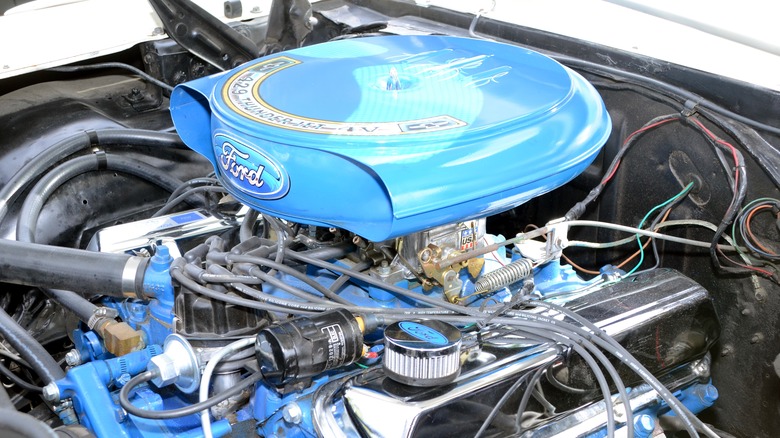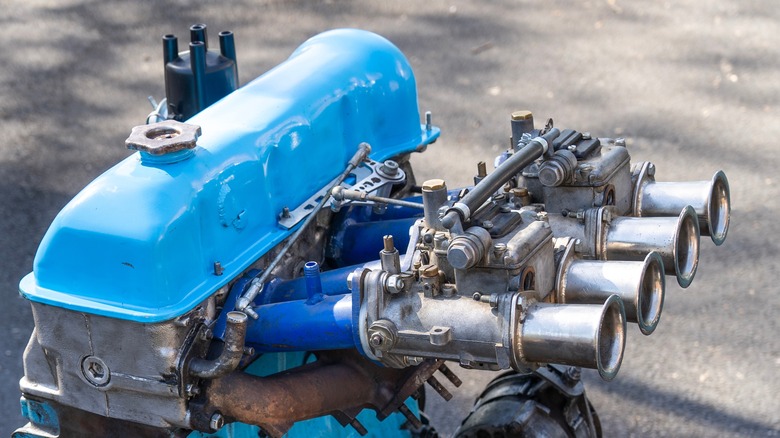What Is Engine Enamel Paint And When Do You Need To Use It?
Some of the most iconic engines ever made, especially engines from the muscle car era, feature painted engine blocks. Look at the 426 Race HEMI, for example. It was one of the most well-known and respected engines to come out of the 1960s, and its Mopar orange block unquestionably struck fear into competition on the race track with the pop of a hood. The same goes for the Ford Corporate Blue 429 Cobra Jet big block, the Buick Late Red 455 V8 engine, and the metallic gold Oldsmobile 350. Back in those days, the engine was the centerpiece of the car, not just from a functional standpoint, but from an aesthetic one too. The enamel paint used on those engines provided both bragging rights and a reminder of which manufacturer's beast you drove.
While there are some exceptions, most manufacturers have ditched the fanfare and flair of painting their engines bright colors in the modern day, especially since most of them are covered by plastic engine covers anyway. It's a real shame, since a unique engine color provides so much character. However, enthusiasts and restoration communities have kept the trend alive.
Enamel paint has other, more practical benefits outside of just looking pretty. Its thermal properties make it a good choice for enthusiasts pushing their engines beyond factory capabilities, while also protecting the engine from corrosion and the elements. It's also extremely hard and chip-resistant, allowing it to hold up well over time.
What are the benefits of enamel paint on an engine?
When painting an engine, there are multiple factors that need to be taken into account. For one, the paint needs to be heat resistant, as an engine block can reach temperatures of 300 degrees Fahrenheit. Since metal expands when it heats up, the painted surface is constantly in flux, which can cause inferior paints to chip and crack over time. Since engines are exposed to the elements from below, it's also important to choose a paint that can hold up when introduced to common road debris, water, and dirt. And, since enthusiasts are constantly working under the hood, it's important that your paint can withstand the rough nature of automotive maintenance.
Luckily, enamel paint can handle all of the above. It's notoriously hard, heat-resistant, and chip-resistant, making it a great option for engine paint. It can typically withstand up to 500 degrees Fahrenheit, allowing it to easily handle the heat of an engine. In fact, some enamel paints are mixed with ceramic resin, which dissipates heat better than enamel alone, making them a good option for hot rod or race engines.
Enamel paint typically takes around a week to fully cure. Cured enamel paint on an engine block also has the benefit of preventing corrosion, meaning that the block itself is less likely to be damaged by rust caused by water or road salt.

